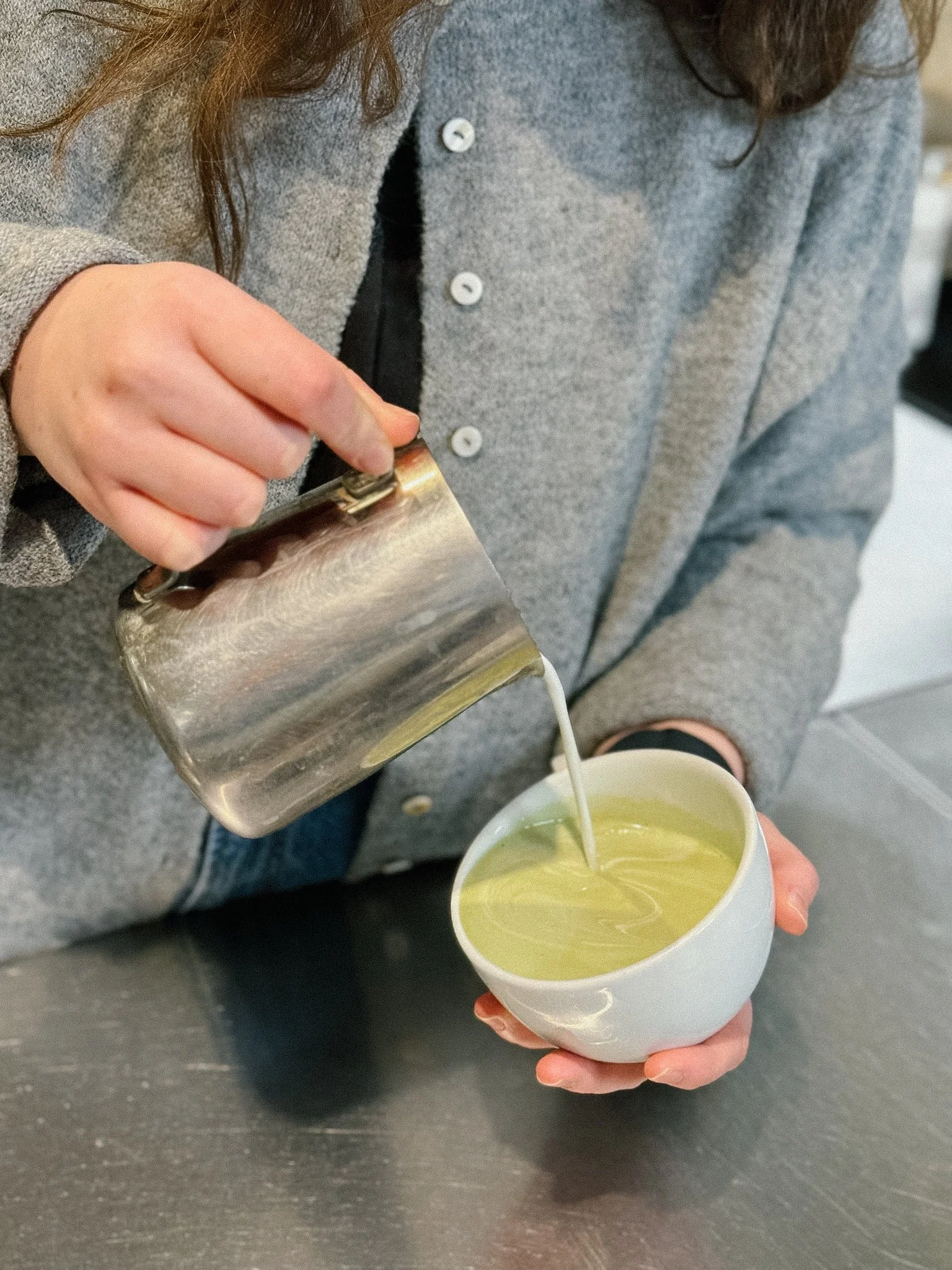Mastering Milk Steaming: The Art and Science of Perfect Coffee
As a barista, there’s a lot more to making a great cup of coffee than just pulling an espresso shot. One of the most crucial yet often overlooked aspects is steaming milk to perfection. Whether you're making a cozy latte at home or crafting a cappuccino to wow your friends, learning to steam milk the right way can take your coffee game to the next level. In this blog, we'll dive into the theory behind milk steaming, breaking down the science, techniques, and tips that will help you create the perfect foam every time.
Understanding Milk Composition: The Building Blocks
Before diving into the steaming process, it’s important to understand the composition of milk and how each component affects the steaming process. Milk is made up of fat, protein, lactose, and water—and each of these plays a role in the texture and consistency of steamed milk.
Fat is responsible for the creamy texture we love in coffee drinks. It helps stabilize the foam and adds richness to the drink.
Protein, mainly in the form of casein, helps to trap air when steaming. This is crucial for creating microfoam, the fine, velvety texture that baristas strive for.
Lactose contributes to the sweetness in steamed milk. When milk is heated, lactose reacts to produce a natural sweetness, which enhances the overall flavor of your coffee.
Water, while necessary for milk to steam, doesn't contribute much to the texture but can dilute the foam if not handled properly.
Understanding how these components interact helps explain why different types of milk (like whole, skim, or plant-based options) behave differently when steamed. Whole milk, for instance, produces a richer, creamier foam due to its higher fat content, while skim milk creates a lighter, airier foam with smaller bubbles.
The Science Behind Milk Steaming: Three Key Phases
Milk steaming isn’t just a mindless task—it’s a carefully controlled process that requires knowledge of both the art and the science behind it. Let’s break down the three main phases of milk steaming:
Aeration – The first step in steaming milk is introducing air to create foam. This is done by positioning the steam wand just below the surface of the milk, allowing air to be drawn in. The goal is to create small, uniform bubbles that give the milk its silky texture.
Emulsification – As air is incorporated into the milk, the fat molecules begin to emulsify, creating a stable, creamy foam. This phase requires the milk to be continuously stirred in a circular motion, which ensures the air is evenly distributed.
Heating – Finally, the milk must be heated to the ideal temperature (around 150°F / 65°C). This not only makes the milk nice and warm for your coffee but also helps release the natural sweetness of the lactose. Be careful not to overheat; milk that exceeds 170°F / 77°C can scald and lose its smooth texture.
Techniques for Perfectly Steamed Milk
Now that we understand the science behind milk steaming, let’s explore some techniques that will help you master the process:
Positioning the Steam Wand: The steam wand should be placed just beneath the surface of the milk, angled slightly towards the side of the jug. This creates a vortex that allows air to be introduced slowly while simultaneously creating a swirl that helps emulsify the milk.
The Vortex Motion: Achieving the right swirl is key to creating smooth, glossy microfoam. As the milk heats up, the whirlpool effect ensures the air is evenly incorporated, resulting in a silky, smooth texture without large bubbles.
The Right Temperature: As mentioned earlier, the ideal milk temperature is 150°F / 65°C. You can gauge the temperature by feeling the side of the pitcher—if it’s too hot to hold comfortably, it’s likely over-heated. Another option is to use a thermometer for precision.
Common Mistakes to Avoid
Too much air: If you introduce too much air in the first stage, you’ll end up with large bubbles and a dry foam. Keep the steam wand just below the surface for a controlled aeration.
Not enough air: If the wand is too deep, you’ll miss the aeration phase, and your milk will be too dense to create a good foam.
Scalding: Overheating milk is the fastest way to ruin your foam. Always keep a close eye on the temperature and avoid letting it go over 170°F.
Texturing Milk for Different Drinks
Different coffee drinks call for different milk textures, and as a barista, knowing how to texture milk appropriately for each drink is key. Here’s how you can adjust your steaming technique based on the drink:
Cappuccino: A cappuccino requires a more aerated foam with larger, soft bubbles. Aim for a frothy, voluminous texture that holds its shape and creates a light, airy cup.
Latte: Lattes need a silky, smooth microfoam that can be poured into a clean, defined shape. The foam should be fine, with tiny bubbles, and the milk should be creamy and velvety.
Gibraltar: A balanced blend of espresso and lightly steamed milk, the Gibraltar has minimal foam and a silky texture. The milk should be warm and smooth, complementing the espresso without overpowering it.
For alternative milks (like oat, coconut, or almond), you may need to adjust your technique slightly, as these options often don’t have the same protein content as dairy milk, which affects the foam’s stability. Experiment to find the best way to create a rich, creamy texture with plant-based milks.
Troubleshooting Tips
Even with experience, you might run into a few challenges while steaming milk. Here are some common issues and tips to help you troubleshoot:
Milk Too Thin: If your foam doesn’t have the right texture or the milk is too watery, try adjusting the steam wand position and ensure you’re incorporating enough air.
Too Much Foam: If your foam is too thick or dry, lower the steam wand into the milk to reduce aeration and focus more on emulsifying the milk.
Burnt Milk: Overheating milk can cause it to taste burnt and spoil the flavor of your drink. Keep your thermometer handy and monitor the temperature closely.
Perfecting Your Milk Steaming Skills
Milk steaming is both an art and a science, and with practice, you can perfect your technique and create delicious, beautifully textured milk every time. Understanding the theory behind milk composition and the steaming process is essential, but developing the right skills and consistency takes time. Keep practicing, stay patient, and don’t forget to have fun with the process!
If you're looking to up your milk-steaming game, remember: it’s all about the right temperature, positioning, and technique. With a bit of practice and the right knowledge, you’ll be steaming milk like a pro in no time.
Michael Michalak
Meet Michael, a suburban native with a passion for storytelling, art, and the outdoors. You’ll find him at the Winnetka café, often connecting with customers or sharing his love for music. When he’s not behind the bar, Michael enjoys hiking, backpacking, and biking—or relaxing with his favorite vinyl and a warm Miel.



